Okay, this one isn’t scary at all, but it still has a really big gorilla in it, and there’s some good tension in spots. Continuing our look at lesser-known Willis O’Brien movies and spin-offs (that aren’t King Kong–I’m planning to do a full Kong series of all six films in the future, once I get them all collected), we come to the last time Willis O’Brien was really able to do a movie the way he wanted to, with the kind of lavish budget and production values he thought his effects deserved.
After several false starts on aborted pictures like Gwangi and War Eagles, O’Brien once more teamed up with the King Kong gang–producer Merian C. Cooper, director Ernest B. Schoedsack, and screenwriter Ruth Rose (Mrs. Schoedsack)–for Mighty Joe Young in 1949. Joining O’Brien on the picture were longtime model maker Marcel Delgado and animators Ray Harryhausen (who would go on to do the effects for, among other things, the 60’s production of O’Brien’s Gwangi project) and Pete Peterson (animator on O’Brien’s later low-budget pictures like The Black Scorpion).
After opening credits that include “Mr. Joseph Young as Himself,” the opening super tells us we’re in Africa. But this is unlike any Africa you’ve ever seen.
This is the standard Willis O’Brien countryside, a combination of matte paintings, glass paintings, live-action, and the everpresent animated birds. The shot is beautifully done, panning down from the sky to make it look as if it was really shot on location. This kind of thing worked wonderfully in black-and-white, and I wonder whether O’Brien could have ever made it work in color.
We meet young Jill Young, a little girl who lives on a plantation in Africa with her father. While her father’s away, Jill meets a couple of native traders, with whom she bargains for the contents of a basket they’re carrying. She has to steal her father’s big flashlight to seal the deal, but eventually she gets what she wanted: a baby gorilla that she names Joe. Dad is none too pleased to find Joe when he returns home, but even though he tries explaining that the gorilla will grow up to be dangerous, Jill talks him into keeping it.
She has him wrapped around her little finger.
Fast forward 12 years to New York.
I’ll be spending way too much time on these two quick establishing shots, but hey, it’s my site, right? Notice in this opening shot that they’re using stock footage of Times Square from the 20’s. Not only are the cars all 1920’s vintage, but check out the billboard at the top. Arrow stopped producing collars in 1930 to focus on full shirts instead (the original idea was that you could wash the shirt less often, but still keep the shirt looking freshly laundered by swapping out the collar and cuffs). Above that is an ad for the Valet Autostrop razor, a single-edged safety razor that came with a strop to keep the disposable blade sharper longer. On the right, we see the Hotel Claridge, a Times Square icon and home of the famous smoking Camel billboard. It was demolished in 1972.
Next we jump to a different angle on Times Square, with an ironic Easter Egg.
Down on the lower right, we see a building housing Crawford Clothes and some new club/casino. That was the International Casino, later to become Bond’s International Casino, a discotheque which would be the site of a riot in 1981 when they oversold a Clash show. But in this shot, they’re obviously newly opened (which would place this stock footage in the early 30’s), advertising a marvelous show by “Sandrini, producer of the famous Bal Tabarin shows.” The Bal Tabarin was a famed San Francisco nightclub. So, newly opened nightclub which is destined to be the site of a riot. Remember that.
We end up in the office of promoter Max O’Hara, and look, we have one more member of the King Kong club joining us. Max is played by Robert Armstrong, better known as Carl Denham from King Kong.
I want to see that Earthquake Ballet. Max is upset, because the swanky nightclub he’s planning to open in Hollywood isn’t receiving enough press coverage. He needs a new angle, which arrives in the form of Oklahoma cowboy Gregg Johnson (woodenly played by Oklahoma native Ben Johnson). Max has the brainstorm to get publicity by taking cowboys to Africa to rope lions. Not only does it sound like a dangerous idea, but when they get to Africa, Max spends his time writing totally made-up tales of his adventures, so why bother to take cowboys with him at all?
For the next sequence, of course. As Max is finishing his latest press release opus, there is commotion in the camp. Gregg runs out to see what the problem is, and holy crap, there’s a gigantic gorilla screwing around with the lion cages!
The effects in this scene are pretty amazing, as Joe not only interacts with a live-action lion, but tips over the miniature cart that the lion is being front-projected into. The action is so perfectly synchronized, and Harryhausen’s animation of Joe so expressive, that you probably won’t even notice the reflections on the sheet of glass behind him. You know, until I clue you in that they’re there.
But the real takeaway here is that Joe doesn’t like lions. He breaks open the cage and chases the lion away, and is pursued in turn by Gregg and the rest of his cowboys, who corner Joe and try to capture him.
If you read last week’s recap of The Valley of Gwangi, then this probably looks pretty familiar. After Gwangi fell through, Willis O’Brien obviously decided to reuse the roping bit here, because it’s pretty damn cool. The illusion is handled through a combination of rear projection and some really nicely detailed miniature riders (above).
Joe ends up grabbing O’Hara, at which point Gregg decides to shoot him rather than rope him. But he is interrupted by the arrival of a mostly-grown-up Jill, who berates O’Hara and Gregg before leaving with Joe. O’Hara realizes that he has just met the centerpiece attraction of his nightclub–an angel with an ape. He sends Gregg to apologize to Jill, who is now running the plantation since her father died.
Jill is played by Terry Moore, who is mainly known nowadays for having dated Howard Hughes and claiming to have been his secret wife. After Gregg flirts with her for a while, O’Hara fast-talks her into signing a contract and coming to Hollywood.
Holy crap, that’s a big club. And it’s just as gaudy inside, with a gigantic curtain painted to resemble the wall on Kong Island (yes, geeks, I know it’s actually Skull Island), a bandstand in a fake treehouse, and live lions behind glass behind the bar.
Max walks on stage in a gigantic pith helmet and introduces Jill, who starts playing “Beautiful Dreamer” (Joe’s favorite song) on a grand piano. The crowd gets restless, because they expected something spectacular, and now they’re watching some almost-pretty girl play a mediocre rendition of a boring song. But then the piano starts to rise up on the darkened stage until she’s floating in blackness, and as the tension rises, the lights come on.
It’s a great moment, made even more spectacular by a really nice arrangement (not sure whether to credit composer Roy Webb or musical director Constantin Bakaleinikoff for this). As the platform rises, the band begins to play tense strings under the song, until the lights come up, and the bombastic strains of Joe’s theme thunder out, causing brief panic until the strains of “Beautiful Dreamer” sweep back in in a crescendo which lets the audience know that Joe won’t hurt them. It’s a great scene made greater by the fact that these musical cues are actually being played live in the club by the orchestra in the tree.
As soon as this act ends, we dissolve straight to another act. Max O’Hara introduces ten strongmen whom he claims to have combed the country to find.
If by “comb the country” you mean “visit your local professional wrestling promoter,” because all ten were in fact professional wrestlers. The bald dude is not, as I thought, Rondo Hatton, but Phil Olafsson, who wrestled under the name “The Swedish Angel.” The guy behind him is Primo Carnera, former heavyweight boxing champion who was rumored to have gotten his title through mob-fixed fights. By this time, he was also wrestling professionally.
They have a tug-of-war with a pool of water between them. Joe wins, but in the process, Carnera pisses him off, so Joe dunks him a few extra times. Carnera then tries to box Joe briefly before being thrown off the stage.
An angry Joe roars at Carnera as the curtain comes down. Not a good omen.
I didn’t want to do this, but I’m going to split this recap into two parts, and conclude it next week, partly because I’ve got way too many screencaps to show, and partly because the other movies I wanted to do–Beast of Hollow Mountain, Dinosaurus, Frankenstein Conquers the World–either aren’t on DVD or I can’t get in time. So I’ll see you next Monday for the conclusion of Mighty Joe Young.

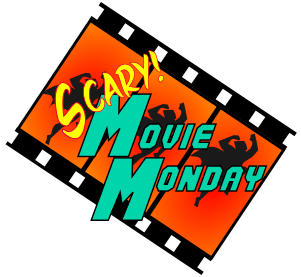
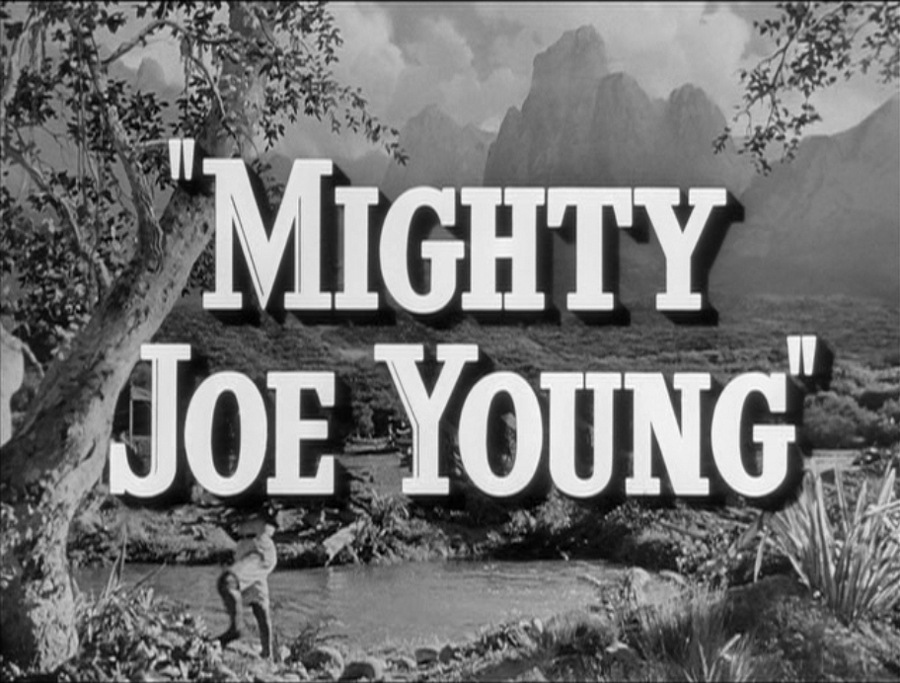
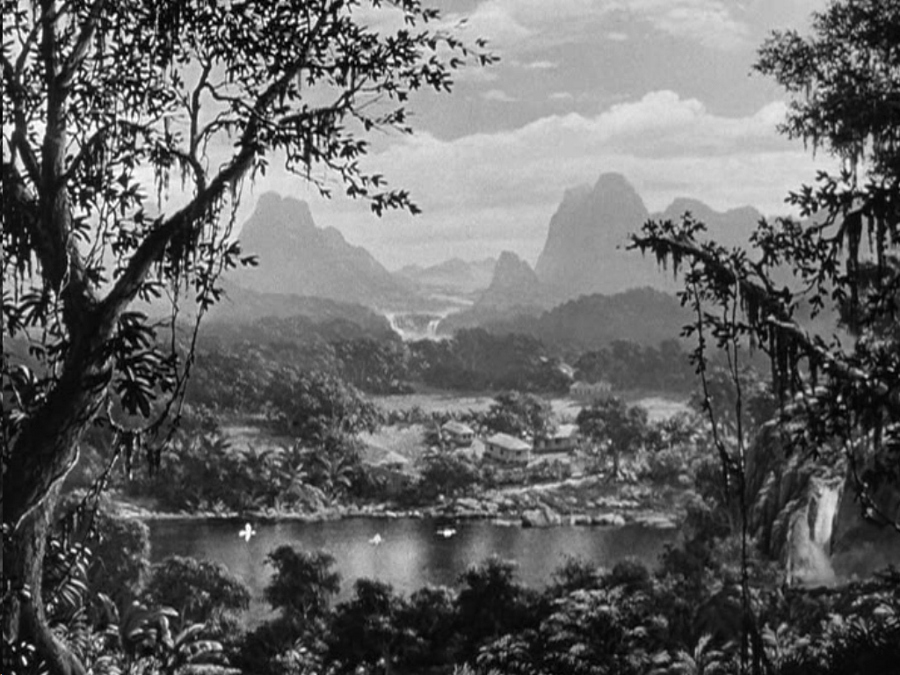
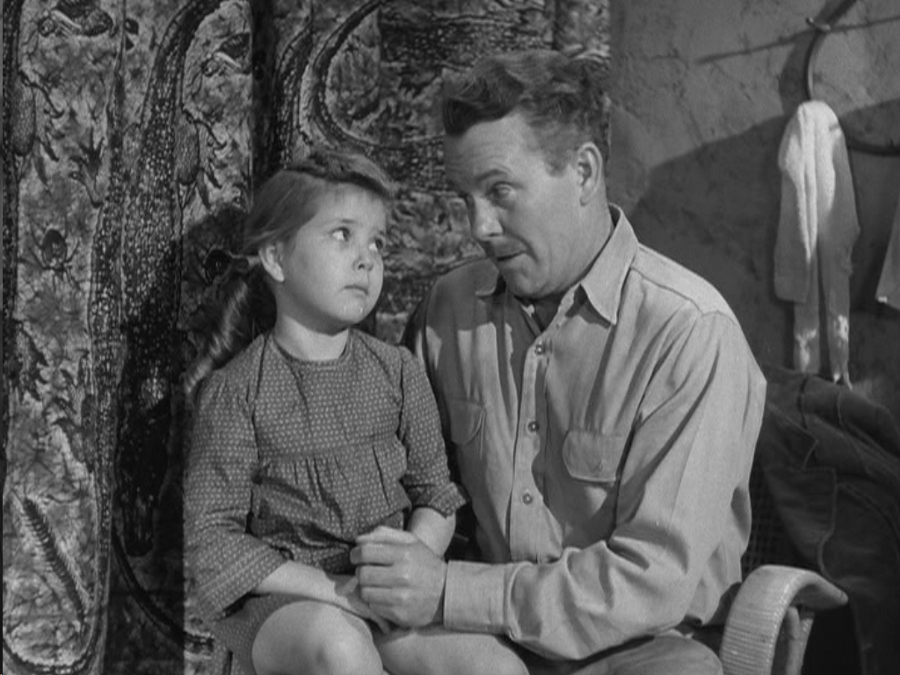
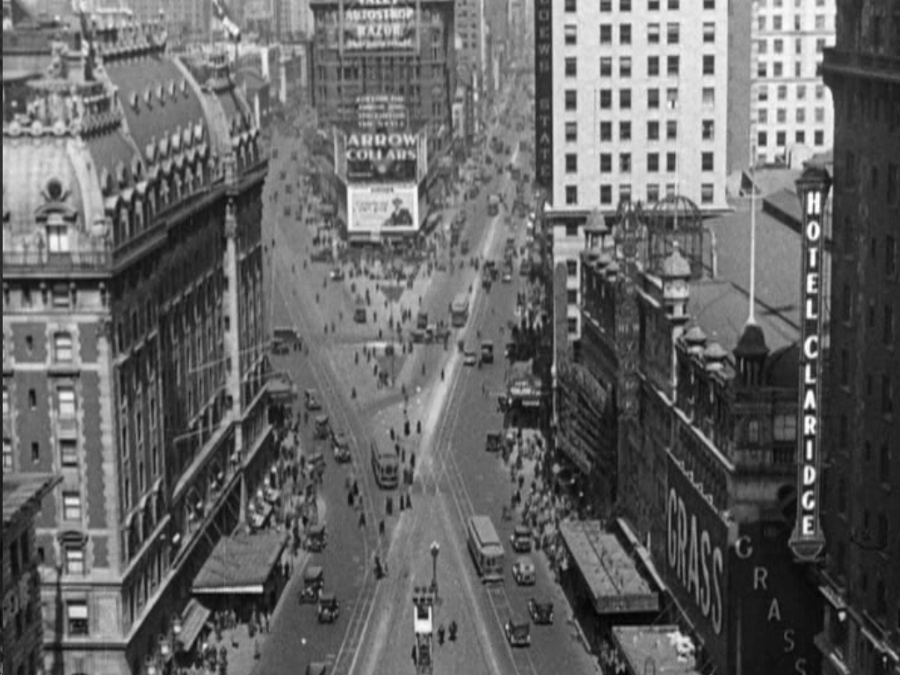
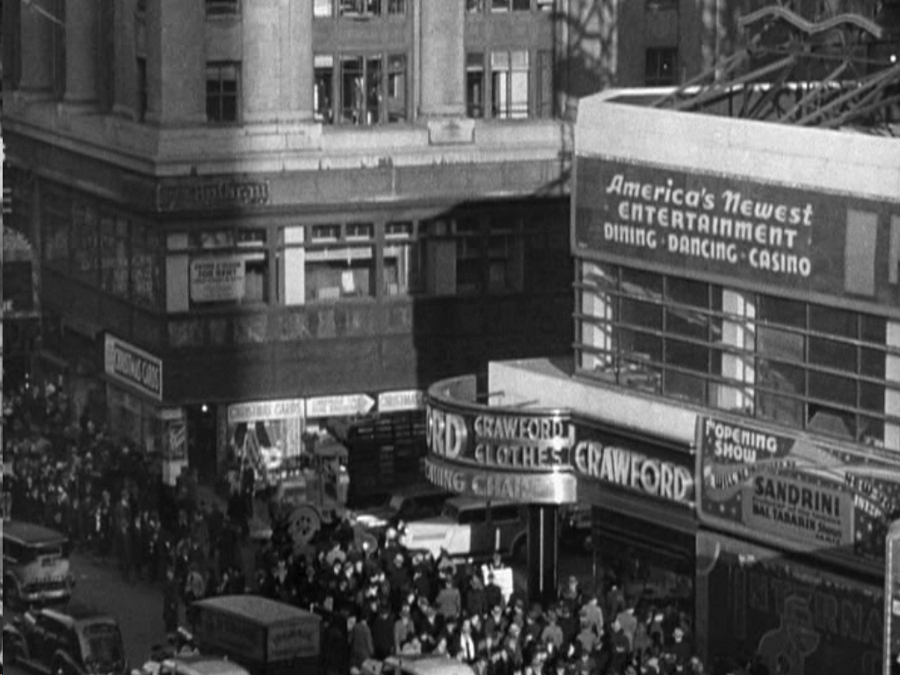
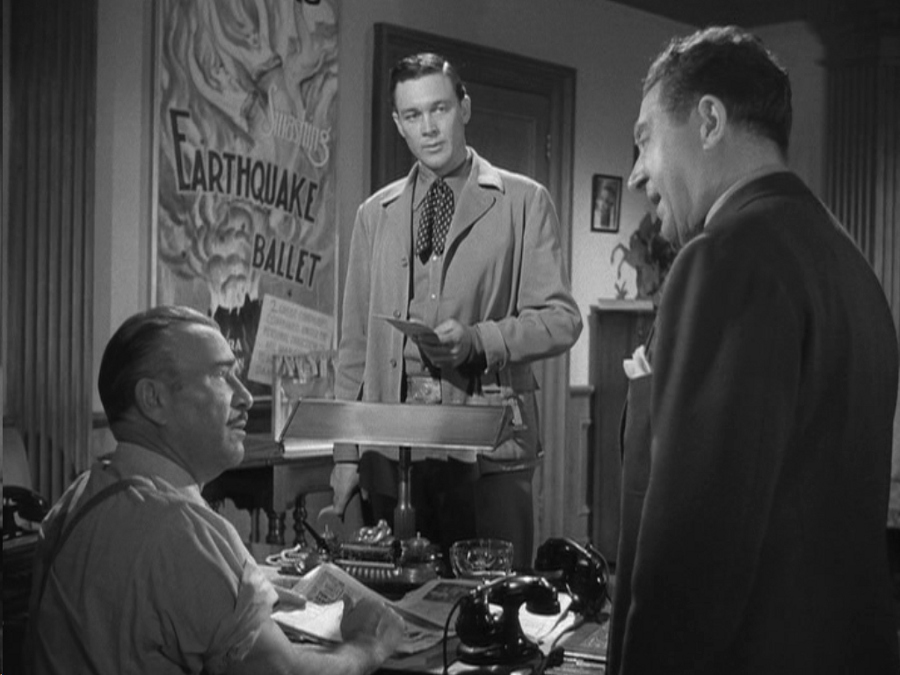
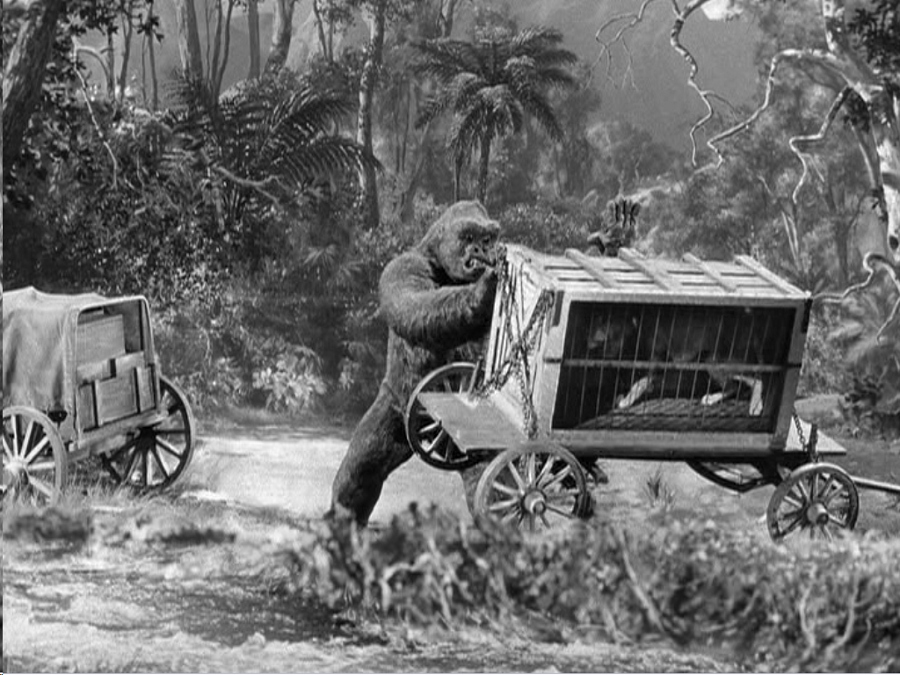


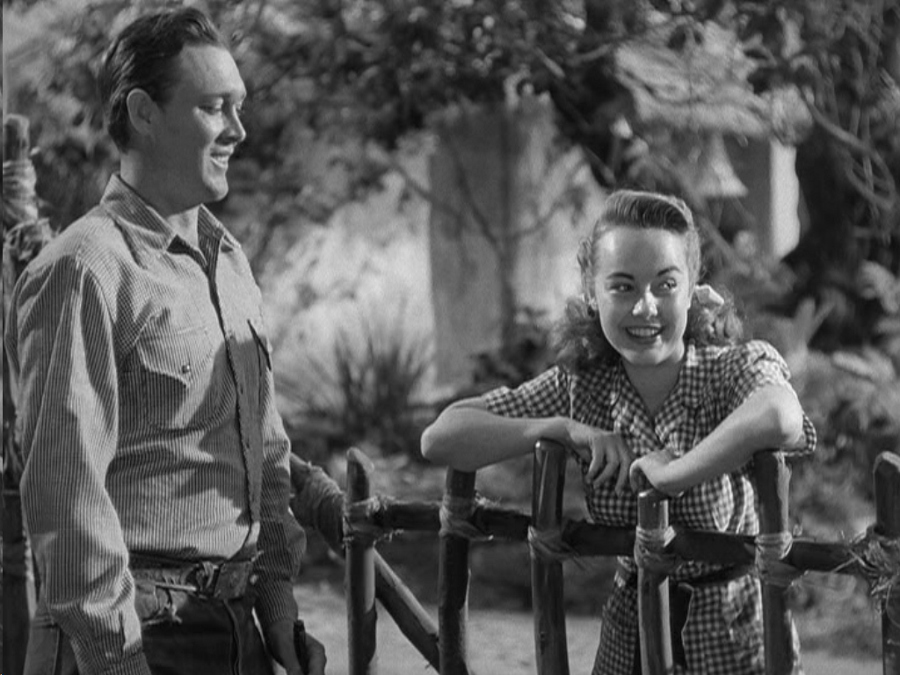


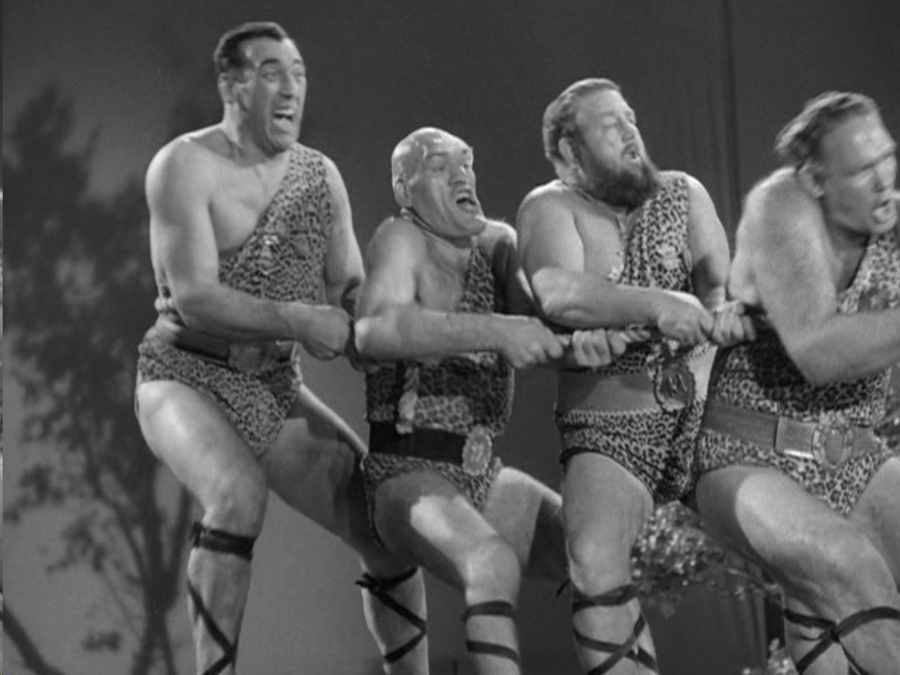
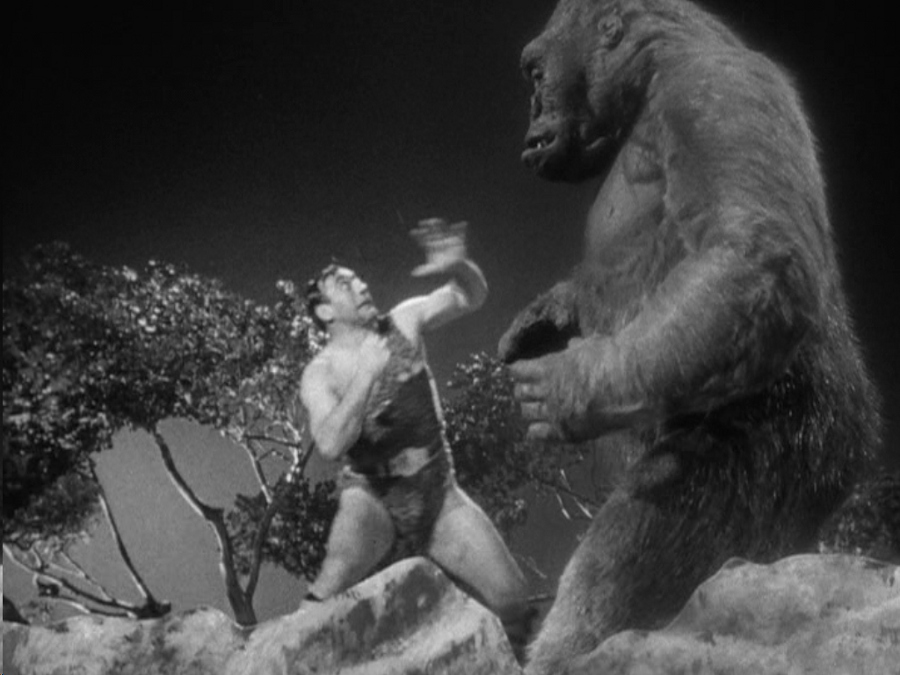



Pingback: Scary Movie Monday – Mighty Joe Young, Part 2 | Hero Go Home